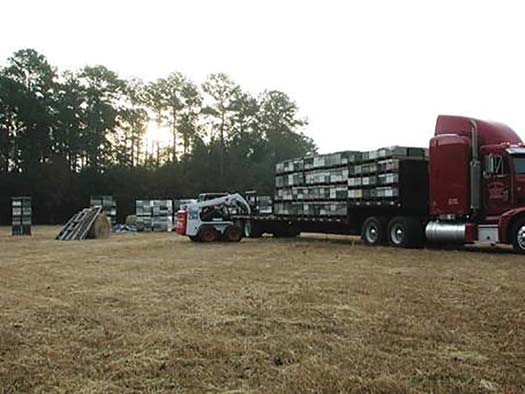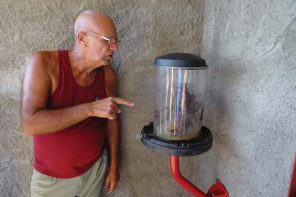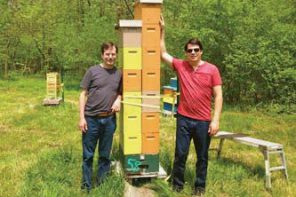By: Chris Hiatt
What Is The Actual Cost:
I wrote this as a response to many news outlets reporting the national total number of beehives is stable and slightly increasing with honey bees being just fi ne with this problem being overblown. Those numbers are true. They failed to report the truth about the high mortality level of over 40% the last two years.
Looking at the numbers, yes hive levels are stable are slightly increasing. Quoting Dr. Jaime Ellis analysis from the University of Florida, the national hive total since 1948 to 1988 have had a .9% gain per year. From 1988 to 2007, .43% per year gain and finally from 2007 to now 1.2% gain. These gains have increased even during the record high loss numbers every year. The main reason why beekeepers have made back all these dead hives and increased is simple, almonds. Almond pollination price has increased from $40 dollars per hive in the early 2000s to $200 in 2019. We are approaching 80% of the nation’s hives trucked to California to pollinate almonds in February and March. With this year’s almonds crop expected to come in at three billion pounds, which has gone up in just five years from 1.8 billion, it shows the success of almond growers and their dependence on hives for pollinating these record crops year after year. With more acres coming into production, the almond industry will be needing several hundred thousand hives more each year.
Honey prices paid to beekeepers has not kept pace with the rise at the retail level, and two years ago for the fi rst time the National Agricultural Statistics Services reported that pollination passed honey for beekeeper income.
So the stable hive numbers reinforces how resourceful beekeepers are at making back dead hives to stay in business. But let me show you the true costs that the media doesn’t understand and is not reporting.
My family’s company keep our hive numbers up by making nucs after almonds in California and again after apples in Washington. Usually around 7 to 8000. Supplemented by buying around 1500 packages and occasionally buying 1000 parent colonies or nucs from other beekeepers depending on the year. Packages and buying hives can be very expensive. Packages are running $80 to $100 for commercial beekeepers and $200 to $250 a hive, respectively. I’m willing to share our expenses from 2008 and compare it to 2019 to show the increase cost of doing business with the high loss levels.
| 2018 | 2019 | |
| Pollen Supplement(Feed) | $0 | $170,142 |
| Queens | $217,411 | $457,068 |
| Drugs(Mite treatment, antibiotics) | $58,380 | $102,598 |
| Labor | $183,837 | $465,321 |
First, the feed increases shows – by us constantly dividing hives to keep hive numbers up, the hives are weaker and need more pollen and syrup because wildflowers in the spring aren’t enough. Besides the amount of wildflowers in California and Washington has gone way down due to clean farming, habitat loss, etc. I can remember never having to feed our nucs we made up in California in the spring to have them strong and ready for honey production in North Dakota. But about seven or eight years ago all are needing feed, more as the years go by. Look at the Pollen supplements or pollen patties category. You see it is a big ZERO in 2008! We never had to supplement pollen to the hives back then. They would overwinter fairly well with the fall pollen and honey we left. We found out fairly fast we had thousands of more hives good enough to rent to almonds by feeding pollen.
Second, queens do not live as long as they used to. The Varroa/virus complex, mite treatments, nosema, are all very hard on the queens. We replace close to 80% every year.
Third, mite treatments. From the 90s to the late 2000’s one mite treatment in the Fall is all you needed to keep your mites under control. Those days are long gone. We are treating five or six times per year, rotating between three or four different treatments.
Fourth, labor has increased the most. That is a lot of trips to our beeyards putting on mite treatments, pollen patties, syrup, putting queens in, pulling off deadouts, etc. The old saying was one guy could run 1,000 hives by himself. For sure that number has to be down nowadays. Also the adverse effect wage rate has increased every year since 2008 for most of the states we run in. Many commercial beekeepers have H2A visa workers to help during harvest as we can’t find enough willing American workers.
I think the American beekeeper quietly just keeps plodding along with all the rising expenses and high losses to pollinate every third bite of food we eat without much recognition on the business-side of things. Many beekeepers I know are struggling and work crazy physical long hours to be able to stay in this worth-while business they love. Along with the nomadic lifestyle, I usually am away from my family three months of the year. If soybean, corn and wheat farmers showed a 100 to 200% increase of costs to grow crops, you would be hearing about it on the TV every night and the Farm bill would compensate them for it. We should be applauded for providing all the pollination services to this great country of ours. I have always said to Senators and Congressman I meet in Washington D.C. that to keep American beekeepers in business is a National Food Security issue. We don’t want to import our fruit, vegetables, seeds and nuts.
So the next time you hear or talk to someone that tells you our country’s beehive numbers are stable and fine and honey bees aren’t threatened – please take time to educate them.







